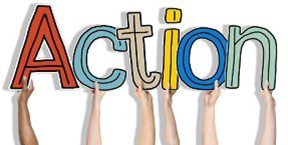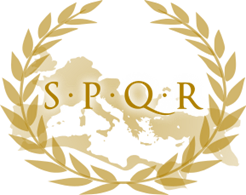ACTION LEARNING IN CLASSROOMS
Beyond Artificial Intelligence
By Dr Charles Margerison
Psychologist
Introduction
There is a lot of speculation surrounding how the advances in artificial intelligence (AI) could replace teachers.
Indeed, the information function of teaching will be largely replaced by AI. Students will rely more on their mobile devices.
However, the role of the action learning educator will never be replaced by AI.
Therefore, teachers of tomorrow need the skills to be coordinators of action learning.
Implications
That means each classroom should be a place where students learn by doing and taking action.
This happens of course in many classrooms, but to what degree? Is it 10% or 90% action?

I was fortunate to meet Dr Reg Revans, the doyen of action learning, early in my career. He had a great concern that teaching was restricting people’s learning. His view was that most of us learn via doing, and that we need to create more opportunities for action.
That is certainly the case in my experience. While I needed some initial guidance on the principles and theory, the learning of skills came from practise.
For example, I was 34 years of age when I first started to play the piano. I did so, because my children were learning, so I asked their instructor to show me the basics. I wanted to help my children. Each week, I practised the exercises. The more I practised, the better I played. Now I have written over 300 songs, and play in cafes and local community facilities.
The same is true for every job I have had. In the first week, people gave me an outline of the requirements. After that, I learned by doing the job.
Information and Skills
Artificial Intelligence can provide information and data. It cannot provide the skills and strengths required – that comes from practise and experience.
Therefore, educators of the future need to design more action experiences in their lessons. For example, in science lessons there needs to be more time spent on experiments and less on lectures. Indeed, in an age of AI, the lecture is an outdated delivery system.
In classes on mathematics, the more time students spend on practice, the better they will be able to solve equations.
Does the same apply in History classes? I have taken a special interest in this. In particular, I have used the re-enactment of events to help students learn. An example is the Roman Invasion of Britain.

Rather than giving a lecture, I ask half the students to take on the roles of Romans and others to become Britons. They are given 15 minutes to discuss what action they will take. The Romans have to decide ways by which they will control the Britons, and the latter have to decide how they will defeat the Romans.
Of course, there is a lot of noise in the classroom. The students become quite emotional in their roles. As a result, they learn to feel what it might have been like in those days. They gain socio-emotional learning through the re-enactment and participation.
The important point is to ask students to write up what they have learned from their learning experience. In particular, what did they learn about teamwork and what did they learn about themselves?
The AI software cannot answer those questions as they are personal to the individual.
Applications
I am working with educators to introduce action-based learning in classrooms to foster learning through experience. This is the fast-emerging form of virtual learning.
Examples from our work include –
Travel – students are provided with the opportunity to explore countries and cultures with a virtual band. As a result, they learn by following the music. We have designed this so that the action learning fits into a lesson where there is only 45 to 55 minutes available.
Example – Visit to France
- 5 mins – Educator introduces the lesson and indicates that students will have the opportunity to develop marketing ideas to encourage people to visit France.
 5 mins – Video on the Can Do Kids Band visit France is shown from the website – candokidsband.com
5 mins – Video on the Can Do Kids Band visit France is shown from the website – candokidsband.com- 15 mins – Students meet in groups of 3 or 4 to discuss ideas for promoting tourism in France.
- 15 mins – Each group makes a presentation of their ideas.
- 10 min – Educator reviews both the content and style of the presentations with positive improvement feedback points.
Example – Character Education.
- 5 mins – Educator introduces the lesson and indicates that students will discuss a key character concept such as ‘Purpose in Life.’
- 5 mins – Video on the life of an amazing person is shown from the website – amazingpeopleschools.com
- 15 mins – Students meet in groups of 3 or 4 to discuss what they understand by ‘Purpose’ based on the exemplar shown.
- 15 mins – Each group makes a presentation of their ideas.
- 10 mins – Educator reviews both the content and style of the presentations with positive improvement feedback points.
Summary
These examples illustrate the action learning approach that encourages students to
- comprehend examples
- construct positive ideas
- communicate in group problem solving
- develop presentation skills
- improve self-development and motivation
- write personal reflections and learning points
All of the above cannot be done by AI software.
The future of classroom education will be based on virtual action learning.






 5 mins – Video on the Can Do Kids Band visit France is shown from the website –
5 mins – Video on the Can Do Kids Band visit France is shown from the website – 


